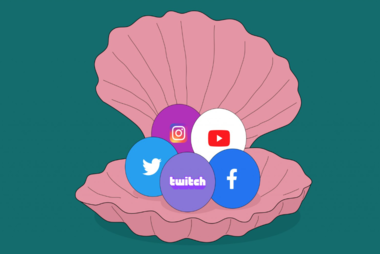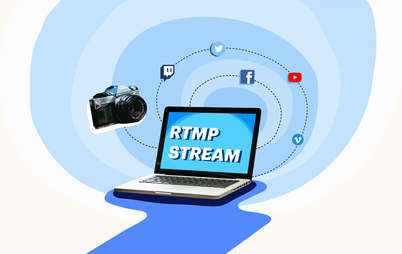In the digital age, live streaming has revolutionized the way we consume content. Whether it’s a game, a webinar, or a product launch, people are broadcasting live from all corners of the world. But why limit yourself to just one platform? Simulcasting offers an innovative solution, allowing content creators to broadcast their streams simultaneously across multiple platforms. With this powerful tool, streamers and businesses can engage a larger, more diverse audience while maintaining high-quality broadcasts. In this article, we’ll explore what simulcasting is, how it works, its benefits, and how you can leverage platforms and tools to master this technique.
What Is Simulcasting?
At its core, simulcasting—short for simultaneous broadcasting—is the act of streaming live content to multiple platforms at the same time. Traditionally, streamers had to choose between platforms like YouTube, Twitch, or Facebook Live, limiting their audience to users of a single service. But simulcasting eliminates this restriction, enabling you to broadcast a single stream across several platforms without duplicating efforts.
What is simulcasting isn’t just a technical solution, it’s a strategic move. With the increasing number of content creators and competition for audience attention, many streamers and businesses are turning to simulcasting to maximize their content’s visibility. As more people adopt digital platforms for live events, webinars, and entertainment, it has risen in popularity as an essential broadcasting technique.
How Does Simulcasting Work?
Now that you know what simulcasting is, let’s dive into how simulcasting works. Essentially, when you simulcast, your live video stream is encoded and sent to a central server. From there, the server distributes the stream to multiple platforms in real-time. This means viewers on YouTube, Facebook, Twitch, and other platforms can watch your content live without you having to upload separate streams.
Key Elements of Simulcasting:
- Encoding: Before sending your live stream to multiple platforms, the video needs to be encoded. This process converts your raw video into a digital format that is suitable for streaming on the web. Streaming software such as OBS or hardware encoders play a crucial role here.
- Streaming Protocols: Streaming to multiple platforms requires compatible protocols, like RTMP (Real-Time Messaging Protocol), which delivers your video from your encoding software to the server.
- Distribution: The simulcasting tool or platform handles the distribution of your stream. It takes the encoded video from your server and broadcasts it to various platforms, ensuring smooth, synchronized streaming.
By understanding how simulcasting works, streamers can ensure their content reaches a broader audience across multiple platforms, maintaining high-quality streaming throughout.
Benefits of Simulcasting
Simulcasting isn’t just about convenience—it offers several tangible advantages that can enhance your streaming strategy.
Increased Reach and Audience
One of the main simulcasting benefits is the ability to increase your audience reach. By streaming on multiple platforms like YouTube, Twitch, and Facebook simultaneously, you’re engaging with a larger pool of viewers, each with its own user base. This multi-platform strategy increases the likelihood of drawing in new followers who might prefer one platform over another.
Improved Engagement
Another significant advantage of simulcasting is improved viewer engagement. When you broadcast on several platforms, you’re creating opportunities for viewers to interact with you on their preferred channels. This enhances the overall engagement, fostering a community feel as users participate from various spaces.
Cost-Effectiveness
Simulcasting is also a cost-effective way to maximize your live streaming efforts. Instead of investing in separate broadcasts for each platform—which requires more time, bandwidth, and equipment—you only need to set up one stream. Simulcasting benefits streamers and businesses alike by offering more efficient content distribution without requiring extra resources.
Which Simulcasting Platforms to Choose?
When you simulcast, the platforms you broadcast to play a key role in how far your reach goes. Several major simulcasting platforms support multi-streaming, each offering different rules, audience demographics, and features. Below are some of the most popular platforms for streaming:
1. YouTube
One of the largest video platforms globally, YouTube supports live streaming and simulcasting, giving creators access to its vast audience. With its vast array of features such as monetization, engagement tools, and analytics, YouTube remains a top destination for live content.
2. Twitch
Primarily known for gaming, Twitch has expanded into a variety of content types. Simulcasting on Twitch allows creators to tap into a highly engaged audience, especially if their content is focused on gaming, music, or creative arts. However, Twitch has certain limitations, such as exclusive agreements for partners that may restrict simulcasting.
3. Facebook Live
Facebook Live is a social media-driven live streaming platform with built-in audience targeting tools, ideal for creators who want to reach friends, family, and followers. Simulcasting here helps engage with communities that are already familiar with you, making it a solid addition to your simulcast strategy.
4. LinkedIn Live
For businesses, webinars, and B2B content creators, LinkedIn Live is the go-to platform. While the audience may be more professional, simulcasting on LinkedIn Live can help connect you with industry leaders and potential business contacts.
When simulcasting across these platforms, it’s important to take note of the specific rules each platform has, such as Twitch’s exclusivity clause for partners or Facebook’s limitations on copyrighted music.
How to Simulcast Live with BocaLive?
As you can see, simulcasting offers enormous potential for expanding your reach, engaging viewers across multiple platforms, and boosting the efficiency of your live broadcasts. But to get the most out of simulcasting, you need the right tools—this is where BocaLive comes in.
BocaLive is a robust, all-in-one live streaming tool designed to make simulcasting easier than ever. With just a few clicks, you can stream to multiple platforms simultaneously, ensuring your content reaches a broader audience with minimal setup. The beauty of BocaLive lies in its simplicity and efficiency—it handles all the heavy lifting behind the scenes, so you can focus on delivering top-quality content to your viewers.

Beyond its powerful simulcast feature, BocaLive offers several advanced tools to further enhance your streaming experience:
- Ultra-Realistic AI Avatars: Replace yourself with AI avatars that look and act like real people, allowing you to stream with a virtual presence while you manage the backend.
- AI-Created Live Scripts: Never worry about planning out your content again. BocaLive’s AI automatically generates live scripts tailored to your streaming needs.
- AI-Driven Comment Responses: Engage with your audience effortlessly. BocaLive’s AI can automatically reply to comments and questions in real-time, keeping your viewers engaged across all platforms.
If you’re looking for a simulcasting tool that goes beyond just basic multi-streaming, BocaLive is the solution you need to boost your live broadcasts.
Best Practices for Effective Simulcasting
To make the most of simulcasting, it’s important to follow some best practices to ensure a smooth, engaging broadcast.
1. Schedule Wisely
Plan your streams for peak times when your target audience is most active on each platform. This may vary depending on time zones and user habits.
2. Ensure Stream Quality
Streaming to multiple platforms can put a strain on your internet connection and hardware. Make sure you have sufficient bandwidth and use streaming tools that can manage your stream’s quality across platforms.
3. Engage Viewers Across Platforms
Use BocaLive’s AI tools or manual strategies to engage viewers on all platforms simultaneously. Address platform-specific comments to maintain a high level of engagement on every stream.
By following these simulcasting best practices, you’ll ensure a smoother broadcast and a more enjoyable viewer experience across all platforms.
Wrap-Up
Simulcasting is a powerful technique that allows content creators to broadcast their live streams across multiple platforms simultaneously, increasing their reach, engagement, and cost-efficiency. Tools like BocaLive simplify the simulcasting process while offering advanced features such as AI avatars, script generation, and automated comment responses. For streamers and businesses looking to expand their online presence, simulcasting is the way forward. Explore the simulcasting capabilities of BocaLive and take your streams to the next level!





Recent Comments